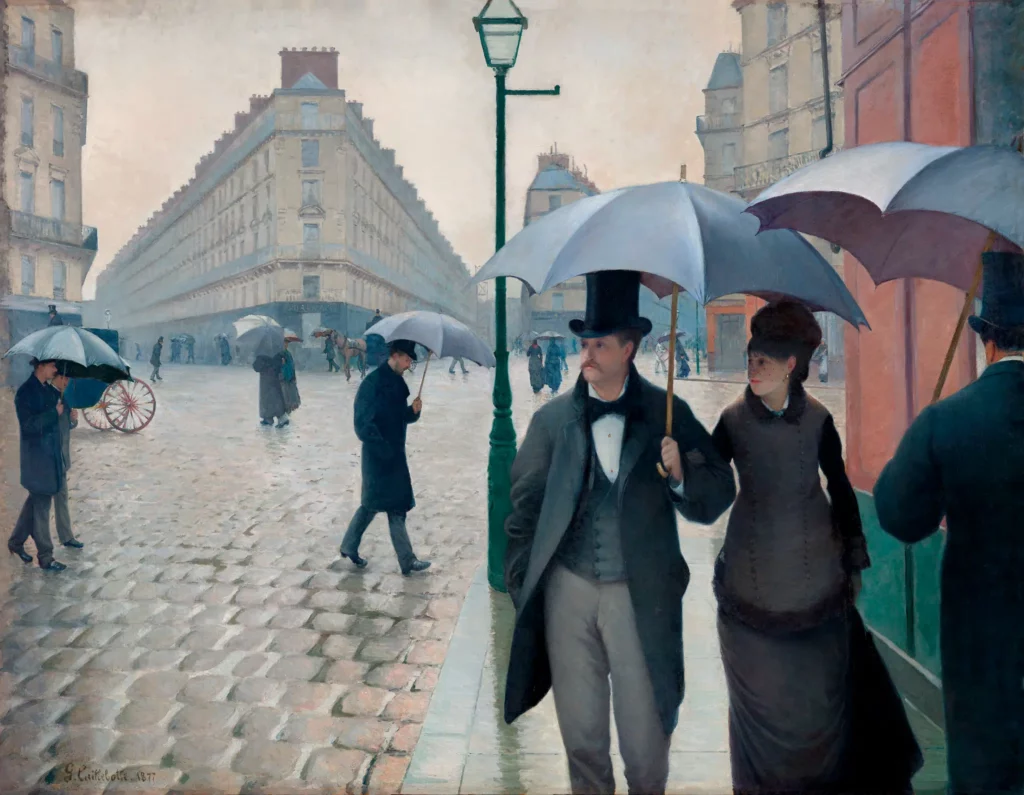Mastering composition in landscape painting involves more than skillful brushwork and color choice. Good composition in landscape painting enhances the overall visual impact and draws the viewer into the scene.

Here are 10 key elements and techniques for mastering composition in landscape painting:
1. Unequal Distribution of Shapes and Elements:
Avoid symmetry and even distribution of elements across the canvas. Unequal placement of trees, mountains, or other features creates visual interest and a natural flow. Edgar Payne was a master at the unequal distribution of shapes as seen below. Also, note how Payne broke the rule and centered the mountain peak! More on this in a minute…

Renowned landscape painter, Scott Christensen looks for “unequal distribution of shapes and scale” in his compositions. He believes too many shapes of similar sizes are not interesting.
Note the interesting breakup of shapes in Sargent’s painting below.

2. Avoiding the Center:
Placing the focal point in the center can make the painting feel static. Instead, position your focal points off-center to add dynamism and engagement.
There are instances when this ‘rule’ can be broken, but it takes a lot of sophistication to make it work successfully like in the example below.
The lamp post, being centered, indeed creates a division in the scene. However, the deliberate uneven distribution of shapes and values serves to maintain an equilibrium while adding interest. This asymmetry is particularly evident in the pedestrians and umbrellas, their darker values subtly pulling the balance towards the right side of the painting.
Moreover, the gaze of the man and woman, along with the direction in which the pedestrians on the left are walking, ingeniously guides the viewers’ eyes toward the left-hand side. This instills a dynamic loop, engaging our eyes in a continuous movement through the painting, enhancing its overall visual appeal.

3. Horizon Placement:
Experiment with the position of the horizon. Placing it below the center can emphasize the sky, creating an expansive, open feel. Conversely, placing it above the center can emphasize the land or water, creating a sense of intimacy and closeness.

4. Leading Lines and Paths: Incorporate natural or implied lines that lead the viewer’s eye through the composition. These can be rivers, roads, or even the shape of clouds.
Incorporate natural or implied lines that lead the viewer’s eye through the composition. These can be rivers, roads, or even the shape of clouds.
I highly recommend Edgar Payne’s book, The Composition of Outdoor Painting where he explains this in detail. The images of the thumbnail sketches are an example from his book.
5. Scale and Proportions:
Maintain realistic proportions between elements. Larger objects usually belong to the foreground, while smaller ones are often in the background. This adds depth and a sense of realism to your painting.
6. Eye Level and Perspective:
Understanding eye level helps you depict the scene from a specific viewpoint. For landscape painting, eye level is at the height of the painter’s eyes. Adhering to this perspective gives a natural, realistic look to your composition in landscape painting.
7. Rule of Thirds:
The Rule of Thirds is a good starting point. Divide your canvas into a 3×3 grid and position key elements along these lines or at their intersections. This technique guides the placement of focal points and creates a visually pleasing balance. Keep in mind, that The Rule of Thirds may be a bit predictable, but it can also create a pleasing composition.
8. Consider the Golden Ratio:
Utilize the golden ratio (approximately 1.618) to establish pleasing proportions within your composition. This ratio often guides the positioning of focal elements.
 9. Use of Colors and Values:
9. Use of Colors and Values:
Be mindful of color and value distribution. Balance the use of light and dark tones to guide the viewer’s eye and create depth within the painting.
Get to know the 4 Value Planes to help you when composing the landscape as taught by master painter, John F. Carlson. Use the following image as your guide. There are exceptions to this formula.

10. Experiment and Learn:
Lastly, don’t hesitate to experiment with different compositions and techniques. Learn from each piece and continue to refine your understanding of composition in landscape painting.
Mastering composition in landscape painting is an ongoing journey. By incorporating these key elements and techniques into your work, you’ll enhance the visual impact of your landscapes and create engaging, captivating paintings.
Want to discover more about successful landscape painting? Check out my new online courses, some are free!
Happy painting!







